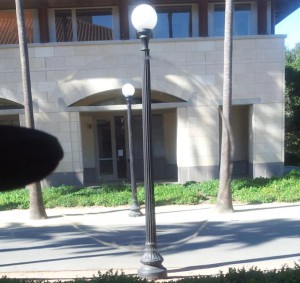by Simon Utsel
It is well known that the new ways of consuming information today has lead to a significant decline in printed newspapers and other forms of paper for communication. To face this issue the pulp and paper industry need to expand into new markets where our raw material can be used.Fortunately, there is a new material derived from wood with great potential that can assist with this expansion and it is called nanofibrillated cellulose. It is produced from wood pulp through a homogenization process that mechanically break down the micronsized pulp fibres into nanosized fibrils using high shear forces. The fibrils have high mechanical properties, exceeding those of steel, and are at the same time lightweight with a high aspect ratio. This makes them interesting for utilization in a wide range of materials such as films, coatings, aerogels and composites. However, the most interesting properties are probably the ones that are taken for granted by many in the pulp and paper industry which are the high abundance, low price and sustainability of the material.

The pioneering work awarded
During my PhD studies conducted at the Royal Institute of Technology (KTH), Stockholm, I worked with different types of surface modification of cellulose-based material with a focus on nanofibrillated cellulose. I was rewarded the Alf de Ruvo scholarship for my research regarding compatibilization of cellulose-based materials with non-polar polymer matrices in composites which have funded my research as a Postdoc at Stanford.

The problem with compatibilization is one of the most important obstacles for making high-performance cellulose-based composites from nanofibrils since cellulose and most plastics do not like each other. This leads to aggregation of the fibrils in the matrix and bad adhesion between the phases which both are contributing to low utilization of the fibril strength and thereby bad mechanical properties of the composites. Also, the smaller the fibrils are, the more surface area they will have, and the more important the surface properties will be for the final properties of the composites. To solve this problem a specially designed polymer was synthesized which has two different blocks with completely different properties. One block is cationically charged and can physically adsorb in water to an anionic cellulose-based material such as nanofibrils. The other block is non-polar, or hydrophobic, and interacts well with the polymer matrix in the composite. This will improve the interaction between the different phases in the composite and thereby have the ability to both make a much better dispersion of the fibrils in the composite and also improve the adhesion between the fibrils and the polymer matrix which both are critical parameters for full utilization of the mechanical properties of the fibrils in the composites. The modification of the fibrils can easily be done in water under mild conditions in a similar way as strength additives are added to pulps today since the attachment is made with the same principle of electrostatic interactions.

Applications and future
The research in my PhD thesis demonstrates that specially designed polymers made possible by the progress in polymer synthesis can be utilized in the pulp and paper industry to tailor surface properties of cellulose-based materials both to optimize its properties for certain applications, such as for composites, and to give them completely new properties that were not possible with traditional technology.
With new technology based on nanofibrils the way people look at cellulose-based materials as only a low-value raw material for paper, tissue and packaging will be challenged and cellulose will surely also find its way to high-value materials such as green transparent electronics, scaffolds for tissue engineering and high performance composites. I am convinced that nanofibrillated cellulose is a material for the future and that surface modification of the fibrils will be a crucial part to optimize their performance in the final applications.

